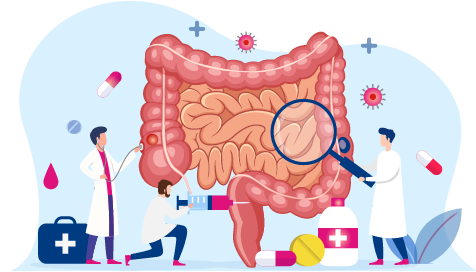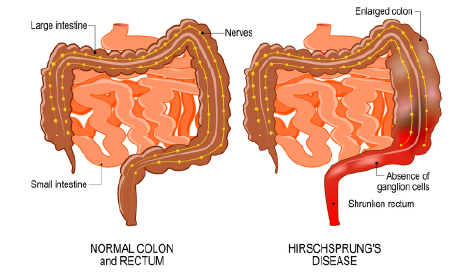A congenital diaphragmatic hernia occurs in newborns. This condition happens when the diaphragmatic layer, which separates the chest cavity from the abdominal organs, develops a hole. Through this hole, the abdominal organs like the intestine and liver enter the chest cavity. This herniation creates a shortage of space in the chest cavity. Because of this, the lungs of a newborn baby develop inadequately, which causes breathing problems in newborns. In the womb, the placenta takes care of breathing functions. Only after the birth, the baby would need artificial ventilation to support the breathing functions.

Causes of CDH
1. Genetic conditions: CDH happens because of genetic factors like chromosomal anomalies and individual genetics. Here, the baby may have additional medical problems or organ abnormalities.
2. Non-genetic condition: CDH caused with no identifiable genetic cause is called isolated CDH. Here, the primary medical concern is pulmonary hypoplasia.
1. Genetic conditions: CDH happens because of genetic factors like chromosomal anomalies and individual genetics. Here, the baby may have additional medical problems or organ abnormalities.
2. Non-genetic condition: CDH caused with no identifiable genetic cause is called isolated CDH. Here, the primary medical concern is pulmonary hypoplasia.
Symptoms
Symptoms vary among babies depending on which part of the diaphragm it affects. The most commonly observed symptoms are as follows :
• Difficulty in breathing or fast breathing
• Blue-colored skin due to lack of oxygen
• Abnormal heart rate
• A Sunken appearance of the abdomen
• Noisy sounds with each breathing
Symptoms vary among babies depending on which part of the diaphragm it affects. The most commonly observed symptoms are as follows :
• Difficulty in breathing or fast breathing
• Blue-colored skin due to lack of oxygen
• Abnormal heart rate
• A Sunken appearance of the abdomen
• Noisy sounds with each breathing
Diagnosis of CDH
Doctors can usually detect CDH during routine ultrasound tests when the baby is in the womb. If the doctor suspects the condition, he may perform a very detailed ultrasound, conduct chromosomal tests of the fetus, and measure its lung size. Imaging tests like MRI are used to determine the extent of the liver’s movement into the chest cavity.
Doctors can usually detect CDH during routine ultrasound tests when the baby is in the womb. If the doctor suspects the condition, he may perform a very detailed ultrasound, conduct chromosomal tests of the fetus, and measure its lung size. Imaging tests like MRI are used to determine the extent of the liver’s movement into the chest cavity.
CDH treatment
CDH can prove life-threatening as it disrupts the breathing and digestive functions of a newborn. Surgery is the only option to correct the malformed diaphragm muscle. During the surgery process, the surgeon makes a few incisions in the abdomen or chest. He pushes back the herniated organs into the abdomen through these incisions. After repositioning the lungs, liver, and stomach, the surgeon closes the hole with stitches or covers it using an artificial patch. For some babies, lungs do not regain their normal function even after the surgery. In such cases, procedures like fetoscopic tracheal occlusion (FETO) are used to reverse the lung damage that occurs in the womb.
CDH can prove life-threatening as it disrupts the breathing and digestive functions of a newborn. Surgery is the only option to correct the malformed diaphragm muscle. During the surgery process, the surgeon makes a few incisions in the abdomen or chest. He pushes back the herniated organs into the abdomen through these incisions. After repositioning the lungs, liver, and stomach, the surgeon closes the hole with stitches or covers it using an artificial patch. For some babies, lungs do not regain their normal function even after the surgery. In such cases, procedures like fetoscopic tracheal occlusion (FETO) are used to reverse the lung damage that occurs in the womb.


